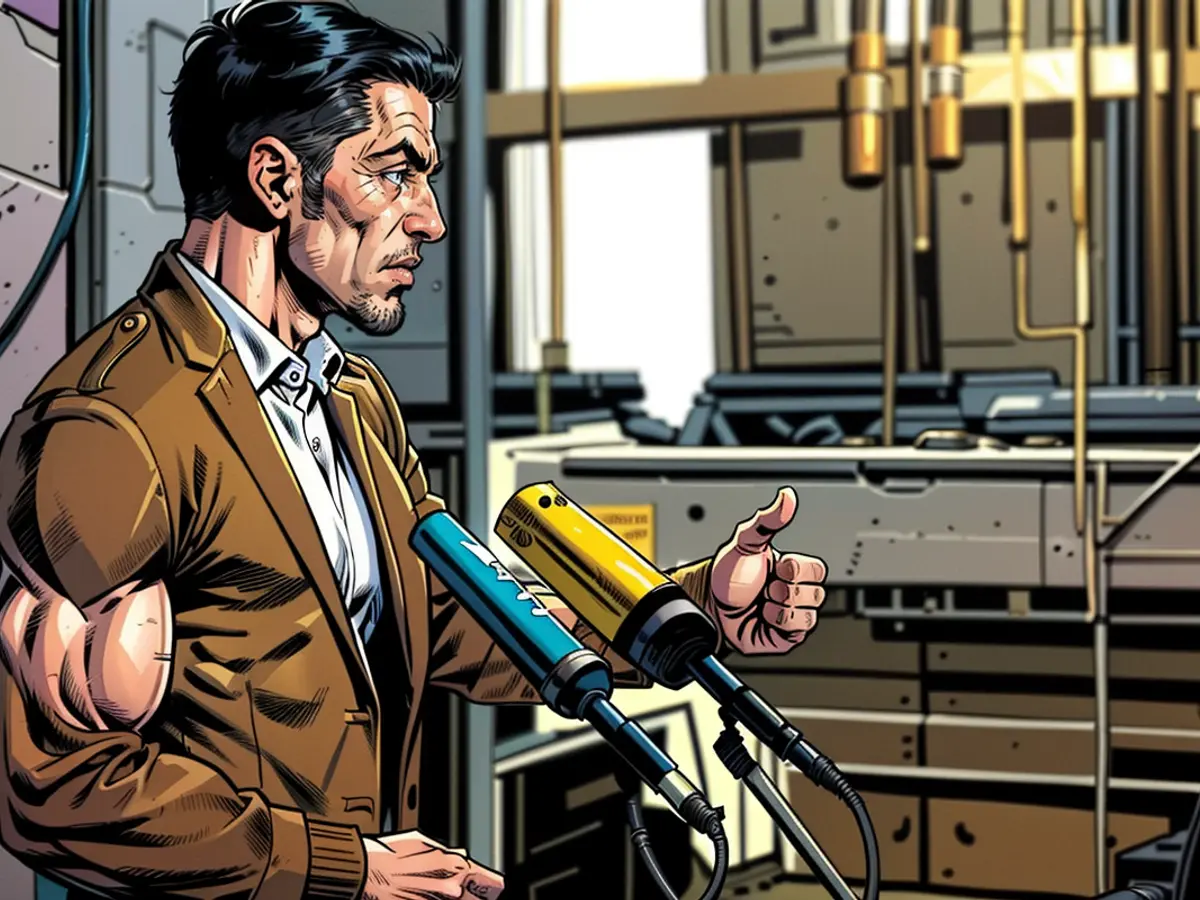We’re about to get the most detailed explanation yet for Boeing’s terrifying mid-air blowout
The incident left a gaping hole in the side of the plane, sending oxygen masks falling from the ceiling, tearing off clothing and ripping phones out of passengers’ hands and hurling them into the darkness.
Fortunately, the crew was able to land the crippled jet without any serious injuries. It was a combination of the skill of the flight crew and good luck that no one was killed. The accident did do serious damage to the public’s confidence in plane manufacturer Boeing, prompting a series of federal investigations into its practices and the safety and quality of its aircraft.
One of those investigations is being conducted by the National Transportation Safety Board, the federal regulator that investigates all manner of accidents, from railroad derailments to some car crashes to virtually all plane crashes.
The NTSB is scheduled to hold 20 hours of publichearings about the Alaska Airlines incident spread over two days, starting Tuesday morning.It will begin by making public a docket of more than 60 documents running more than 3,800 pages that have been collected in the seven months since the accident.
Boeing executives in charge of quality control will then face the safety board for questions, including Boeing Commercial Airplanes’ senior vice president of quality Elizabeth Lund, according to a new agenda posted by the NTSB. Alongside Lund for half of Tuesday’s hearing will be Doug Ackerman, vice president of supplier quality for Boeing Commercial Airplanes.
The NTSB will ask how the Boeing 737 MAX 9 door plug was removed and reinstalled without critical bolts before the plane was delivered to Alaska Airlines. The NTSB will also ask about the “lack of documentation” on the factory floor, according to the agenda, as well as changes the manufacturing Goliath implemented after the incident.
The rare, two-day-long investigative hearing is key to closing the case on the January 5 incident, which led to a 19-day-long grounding of 737 MAX 9s in the United States. The NTSB says it will “use the information gathered to complete the investigation, determine probable cause, and make recommendations to improve transportation safety.”
A final report is still months away.
Missing bolts — and missing paperwork
The NTSB has already released preliminary findings from the incident, disclosing that the plane used on the flight left the Boeing factory in Renton, Washington, 10 weeks earlier and without the four bolts needed to hold the door plug in place.
Since that report, Boeing has said the reasons for that oversight came down to something as simple as a lack of paperwork.
When the fuselage of the plane arrived at the Boeing factory from supplier Spirit AeroSystems, the door plug was in place, as were the four bolts meant to hold it securely attached to the side of the jet. But there were problems with five rivets near where the door plug was installed, and Boeing workers removed the door plug in order to fix those rivets.
According to Boeing, the workers who fixed therivetsdidn’t generate the paperwork indicating they had removed the door plug and the four bolts in order to do that work.
When a different group of employees put the plug back in place, Boeing says the employees didn’t think the plane would actually fly in that condition. Instead, they were just blocking the hole with the plug to protect the inside of the fuselage from weather as the plane moved outside to a different area of the factory compound. That group of employees often makes those kind of temporary fixes.
Those employees likely assumed paperwork existed showing that the plug and bolts had been removed, and that paperwork would prompt someone else along the line to install the bolts. But without the paperwork, no one on the assembly line knew that the door plug had ever been removed, or that its bolts were missing and needed to be replaced.
Tragedy narrowly averted
The fact that the door plug didn’t come out when the plane was at 35,000 feet rather than at a lower altitude with passengers still buckled into their seats is the first part of the good luck.
The plane made 153 flights with passengers on it from the time it was delivered to Alaska Airlines in late October and the January 5 flight, including 22 flights that took it over the Pacific Ocean for hours flying to and from Hawaii. It would have had much more difficulty making it safely to the ground if the door plug had failed hours, rather than minutes, from the nearest runway.
And the fact that the two seats immediately adjacent to the door plug were two of the only seven empty seats on the plane carrying 177 people was very important in preventing fatalities. The force of the air inside the cabin rushing through the hole was enough to twist and bend the metal seats themselves towards the opening. Would-be passengers sitting in those unoccupied seats might not have been able to stay in the the plane, especially if they were not buckled in.
But perhaps most fortunate of all, when the door plug came out, it fell away from the plane without hitting the tail section, perhaps damaging the the rudder or the vertical stabilizers on the tail, which are crucial to the plane flying straight, level and under control. If that had happened, it would have been very difficult for the plane to land safely, if at all.
Boeing’s mounting problems
But the probe is only one of the problems Boeing faces because of the incident.
There could be criminal charges related to the failures that led to the incident, as the FBI has notified passengers and crew members that they might be considered crime victims.
Even before the flight, Boeing faced the possibility of criminal charges because of problems with the 737 Max that were kept hidden from the Federal Aviation Administration during the original certification process. Those problems led to a design flaw on the plane that is blamed for two fatal crashes in 2018 and 2019 that killed 346 people.
In January 2021, Boeing and the Justice Department agreed to a settlement that deferred criminal prosecution of Boeing for three years for its employees defrauding the FAA during the certification process. But that three-year probationary period had been due to end just days after the January 5 flight. Instead, the DOJ reopened the investigation following the Alaska Airlines incident, and last month Boeing agreed to plead guilty to criminal charges and be put under the supervision of a court-appointed monitor.
The FAA has also increased scrutiny of Boeing’s manufacturing process and is limiting how many planes it can build, which has added to financial losses at the company that have now reached $33 billion since the second fatal crash in 2019.
Boeing’s sales have plunged 70% in the first six months of the this year. In June it sold just three passenger jets, and one of those was to Alaska Airlines to replace the plane used in the January 5 flight, which Boeing has repurchased from the airline.
Last days of current leadership
Boeing will get a new boss the day after the hearing ends on Wednesday, as Dave Calhoun, who has served as CEO since January 2020, steps down and Kelly Ortberg, the former CEO of aerospace supplier Rockwell Collins, assumes the top job.
Calhoun’s departure is being termed a retirement, and he is 67. But when Boeing’s board waived the retirement age for top executives for Calhoun in 2021 so he didn’t have to retire after two years on the job, he said he intended to stay “as long as they want me.” He could have stayed in the job through 2027 under the waiver granted in 2021.
He has faced harsh criticism for many of Boeing’s problems, with more than a dozen whistleblowers at the company complaining to congressional investigators that they faced pressure and retaliation for flagging safety problems in the company’s assembly process.
Calhoun has only testified on Capitol Hill once despite all the attention Boeing has received. In a stunning understatement he conceded the company’s safety culture was “far from perfect,” but vowed that safety is a priority and that the company is making progress. But that didn’t stop a bipartisan grilling at a Senate hearing in June.
“Why haven’t you resigned?,” he was asked by Senator Josh Hawley during that hearing.
“Senator, I’m sticking this through,” he replied. But his plans to leave the company by the end of the year had already been announced by the time of the hearing.
The incident has significantly impacted the public's trust in Boeing, leading to numerous federal investigations into its practices and aircraft safety. These investigations cover various aspects, including investigations conducted by the National Transportation Safety Board, which also handles incidents like railroad derailments and car crashes.
Boeing executives, including senior vice president of quality Elizabeth Lund and vice president of supplier quality Doug Ackerman, are set to face the NTSB for questioning regarding the missing bolts on the Boeing 737 MAX 9 door plug and the lack of documentation on the factory floor.








